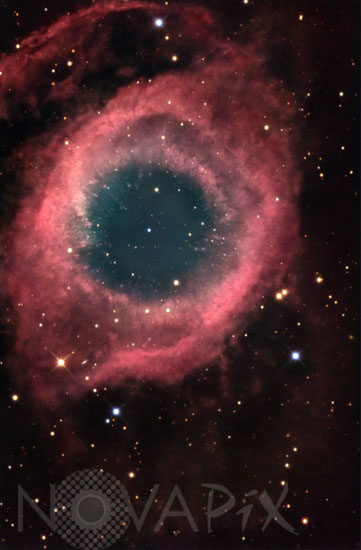Photo Agency - Astronomy - Space - Nature

Planetary nebula Helix (NGC 7293)
author: R.Jay GaBany/Novapix
reference: a-nep72-93012
Image Size 300 DPI: 20 * 31 cm
Located in the constellation of Aquarius, the Helix is our closest planetary nebula at about 700 light years distance. It is so close that it can be telescopically seen shifting one side to the other in front of the more distant background stars as the earth moves around the sun- a phenomenon called parallax. Parallax measurements are used to trigonometrically deduce distance between an object in space and the earth. A planetary nebula results when a red giant star, near the ends of it's productive life, sheds its outer layers into space and creates a breathtaking shell of surrounding gas that early visual astronomers likened to the disks of planets.
This planetary spans approximately 1.5 light years and is still expanding. The name associated with the Helix is derived from the cork-screw appearance that resulted from the spin induced by the nebula's central star as its outer layers were thrown off into the surrounding vacuum of space. This image of the Helix Nebula, photographed by R. Jay GaBany was the result of combining forty two, fifteen minute digital exposures taken during the month of September 2005, through a remotely controlled twenty inch Ritchey-Chretien telescope with an eleven mega-pixel camera at f/8. The remote observatory is located in Cloudcroft, New Mexico, 7,000 feet above sea level in the Sacramento Mountains.
Keywords for this photo:
2005 - AQUARIUS - ASTRONOMY - DWARF - DYING STAR - EVOLUTION - HELIX - NEBULA - NGC 7293 - PLANETARY NEBULA - STAR - WHITE DWARF -
Contact : Stéphane Aubin +33-(0)9-51-26-53-76
© Novapix - All rights reserved


